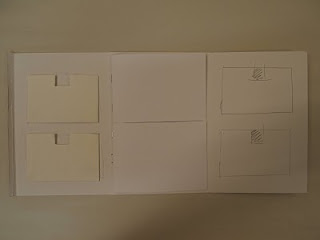Design for print with a focus on typography and format, aimed at communicating a message to raise awareness and aid culture.
Sunday, 30 January 2011
Saturday, 29 January 2011
Garry Barker : Format Testing
Garry Barker : Format Planning
Friday, 28 January 2011
Garry Barker : Traditional Aesthetic
Thursday, 27 January 2011
Justin Van Genderen




'Never Use More Than Two Different Typefaces'

This is the fifth book in the Ridiculous Design Rules series by Anneloes van Gaalen. This new publication is about ridiculous (or not…) rules in typography, a joy for graphic designers and everyone who has anything to do
with designing texts. Like no other, this is a world that is held together by rules, which designers, of course,
often take great delight in breaking.
In this series, ‘ridiculous’ is a relative term, because what is nonsense for one can be an important guideline for another.
In these pleasing and educational books, it is not about laying down the law. For each of the 51 rules covered
in each book, Van Gaalen refers to quotes by famous fellow designers, who either think there is something to the rule or have made a personal variation of it. Whether you agree with them or not, the Ridiculous Design books sharpen your own thoughts about the rules and the assumed truths of design, advertising, fashion, photography and the Internet. Each rule is convincingly illustrated, with the illustrations either confirming or disproving the rule in question.
(this is not my writing, but the writing of a reviewer)
Greg Richards










Studio Newwork















































